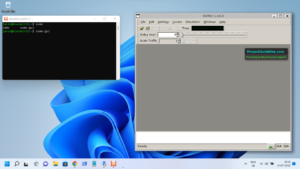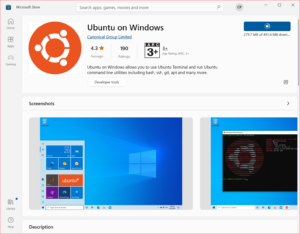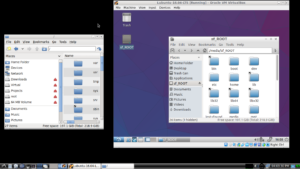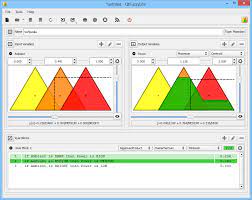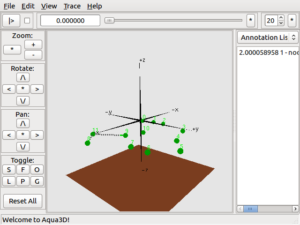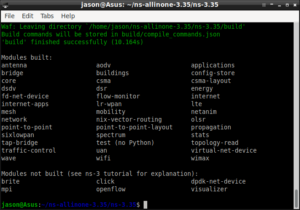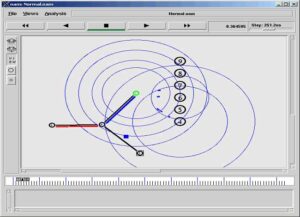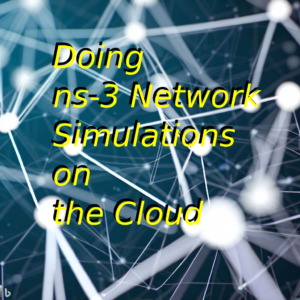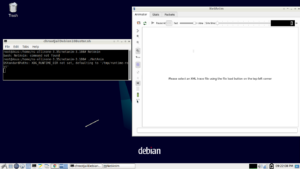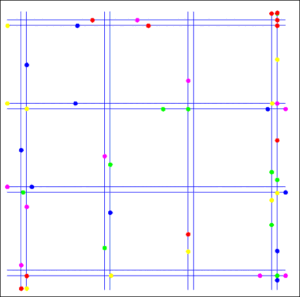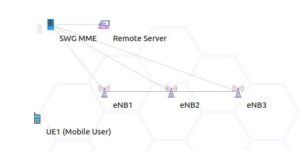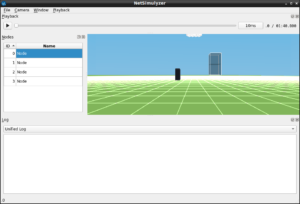Sixth-Generation Wireless (6G)
6G is the successor to 5G cellular technology. 6G networks will be able to use higher frequencies than 5G networks and provide substantially higher capacity and much lower latency, and the 6G internet is expected to launch commercially in 2030. [4]. One of the goals of the 6G internet is to support one microsecond latency communications. This is 1,000 times faster — or 1/1000th the latency — than one-millisecond throughput.
Terasim[1]
TeraSim is the first simulation platform for THz communication networks, which captures the capabilities of THz devices and the peculiarities of the THz channel[1]. It is provided as an extension for ns-3 simulator. There are posibilities for modeling a typical 6G network combining TeraSim with ms-van3t.
Using this module it is possible to validate the link-layer transmission performance of the nanoscale scenario with an adhoc network architecture and the macroscale scenario with a centralized network architecture.
The following handshake protocols are implemented:
- Nanoscale scenario: 0-way (ALOHA) and 2-way (CSMA)
- Macroscale scenario: 0-way (ALOHA), 1-way (ADAPT-1), 2-way (CSMA) and 3-way (ADAPT-3)
Design Aspects
The following Design Aspects of Terasim were presented in [1]:
- THzNetDevice: derived from the ns-3 NetDevice class and used for creating new MAC protocols. It performs as the joint point which connects the THzChannel module, THzPhy module and the assistant modules.
- THzChannel: provides a general THz band channel that can be used by any upper layer design.
- THzSpectrumValueFactory: is derived from ns-3 SpectrumModel class, it creates a frequency-dependent THz-band based on the HITRAN (HIgh-resolution TRANsmission molecular absorption) database and masks the transmit power to user defined bandwidth.
- THzSpectrumPropagationLoss: Creates the frequency and transmission distance-dependent propagation loss module based on the peculiarities of THz-band communication.
- THzPhyNano: models the hundred-femto-second pulse-based physical layer with pulse interleaving and calculates the SINR (Signal to Noise plus Interference Ratio).
- THzMacNano: models slightly modified version of two classical MAC layer protocols tailored to nanodevice energy harvesting.
- THzEnergyModel: models the energy harvesting and energy consumption process of a node in nanonetworks.
- THzPhyMacro: mainly considers the time duration of a frame being propagated in the THz channel and checks if the receiver is able to receive the signal with enough power strength by comparing it with the SINR threshold.
- THzMacMacro: implements the 0-way handshake and 2-way handshake protocols, a NAV mechanism is applied in this module.
THzMacMacroAP: implements the 1-way and 3-way ADAPT protocols for the AP end. - THzMacMacroClient: implements the 1-way and 3-way ADAPT protocols for the client node end.
- THzDirectionalAntenna: is derived from ns-3 CosineAntennaModule class. The main extension in THzDirectional Antenna is enabling the turning ability.
Limitations
As mentioned in[1], the THz system module is only tested against the latest ns-3 version (ns-3.33) and should be kept aligned with ns-3-dev. As of now, the ns-3 interface to THz is Ipv4 only. It is possible to compile “Terasim” in the ns-3-dev version with little modifications.
Installation of ms-van3t
“ms-van3t” is a Multi-Stack VANET Framework module developed for ns-3. This module can be used to build and simulate ETSI-compliant VANET (V2X) applications using SUMO and ns-3. As per its documentation, ms-van3t currently supports two stacks/communication technologies for V2I/V2N:
- 802.11p, communicating, for instance, with a Road-Side Unit
- LTE, for V2N communications
I decide to install and test the Terasim along with ms-van3t framework under ns-3- because, one can extend ms-van3t with the features of Terasim and possible to mimic a future 6G network and test its performance under a more practical VANET scenario. This will give a feature to use a 6G like networking under VANET.
The following article explains the installation of ms-van3t.
Installing ms-van3t – A Multi-Stack VANET Framework for ns-3
So, one should proceed with the installation of Terasim only after completing the installation of ms-van3t.
Installing Terasim
One may download Terasim from[2] and may follow the installation procedure available in[1]. Here I present the same installation procedure that was presented in [1].
Step-1: Cloning the Terasim from the official Repository
we may clone the repository inside the /ms-van3t/contrib folder or /ms-van3t/src folder (or /ns-3.33/contrib folder or /ns-3.33/src folder).
Here I assume that ms-van3t was already installed in the home folder of the user.
$ git clone https://github.com/UN-Lab/thz.git
Step-2: Reconfiguring the waf Compile System of ns-3
$ ./waf clean
$ CXXFLAGS=”-Wall” ./waf configure –build-profile=optimized –enable-examples
Step-3: Recompiling ns-3
Run the “waf” script from /ns-3.33 folder (or
$ ./waf
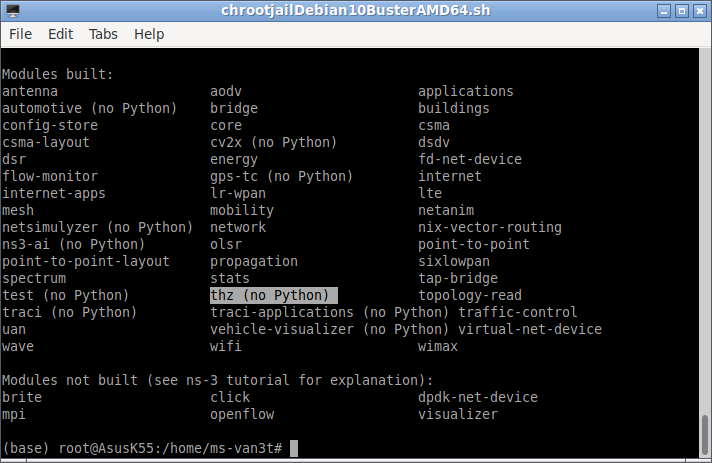
Step-4: Testing the Installation of Terasim with Example Simulaltions
The following screenshot shows the output of the two example simulations provided along with Terasim.
(We have to confirm whether it is really working or not)
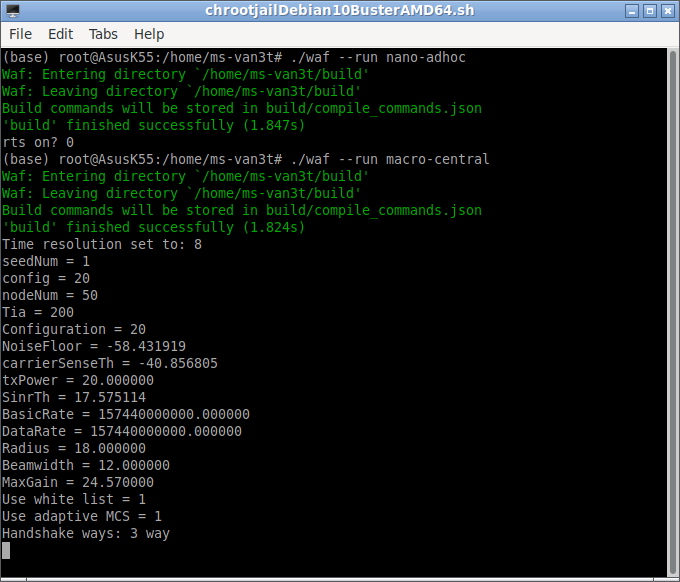
We may explore the aspects of Terasim in another future article by doing some extensive simulations and tests.
Note
Terasim seems to be working good on ns-3.33. But to make it work with the latest ns-3-dev version, we may need to patch some files under /src/antenna folder. Because the “Angle” class is handled in a different way under ns-3-dev version. Since the latest dev version of ns-3 only support cmake, most importantly, we need to port the “wscript” into CMakeLists.txt before compiling “thz” using the new “ns3” script based cmake compile system.
References:
- https://www.projectguideline.com/installing-ms-van3t-a-multi-stack-vanet-framework-for-ns-3/
- https://apps.nsnam.org/app/thz/
- https://github.com/UN-Lab/thz
- https://www.techtarget.com/searchnetworking/definition/6G
- Z.Hossain, Q.Xia, and J.M.Jornet, TeraSim: An ns-3 extension to simulate Terahertz-band communication networks.
- D.Morales, J.M.Jornet, ADAPT: An Adaptive Directional Antenna Protocol for medium access control in Terahertz communication networks

 Discuss Through WhatsApp
Discuss Through WhatsApp

